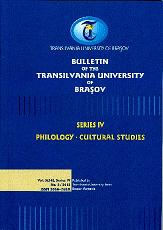Hungarian-Irish Parallels: National Language in 19th-Century Hungary and Ireland
Hungarian-Irish Parallels: National Language in 19th-Century Hungary and Ireland
Author(s): Márta PintérSubject(s): Language and Literature Studies
Published by: Editura Universitatii Transilvania din Brasov
Keywords: national parallels; Irish language; Hungarian language, language revival; language movement; print language; cultural nationalism; linguistic nationalism; 19th century
Summary/Abstract: In Hungary a powerful language movement secured official status for Hungarian as a state language in 1844, and the contemporaneous development of its printed form gave rise to a number of Hungarian journals. Simultaneously, the Irish language experienced a dramatic decline and, as a consequence of the Irish-English language shift, English had become print language in Ireland. Yet, leading Anglo-Irish intellectual Thomas Davis considered Irish as Ireland’s “national language”, and emphasized the importance of its printed use in shaping national consciousness. In his Our National Language Davis makes references to the status of Hungarian and uses the achievements of the Hungarian language movement as an example for Irish language revivalists. Furthermore, in calling for the publication of at least bilingual, Irish-English newspapers, Davis refers to the that time multi-ethnic Hungary, where “Magyar, Slavonic and German” all appear in print despite the fact that Hungarian is the vernacular language of the majority population. My paper examines whether Davis’s seeming disregard for the remarkably different positions of Hungarian and Irish in a striking parallel between them as “national languages” is just a product of romantic nationalism, or can be justified against a proper interpretation of “national parallels”.
Journal: Bulletin of the Transilvania University of Braşov, Series IV: Philology & Cultural Studies
- Issue Year: 2012
- Issue No: 2
- Page Range: 25-30
- Page Count: 6
- Language: English

